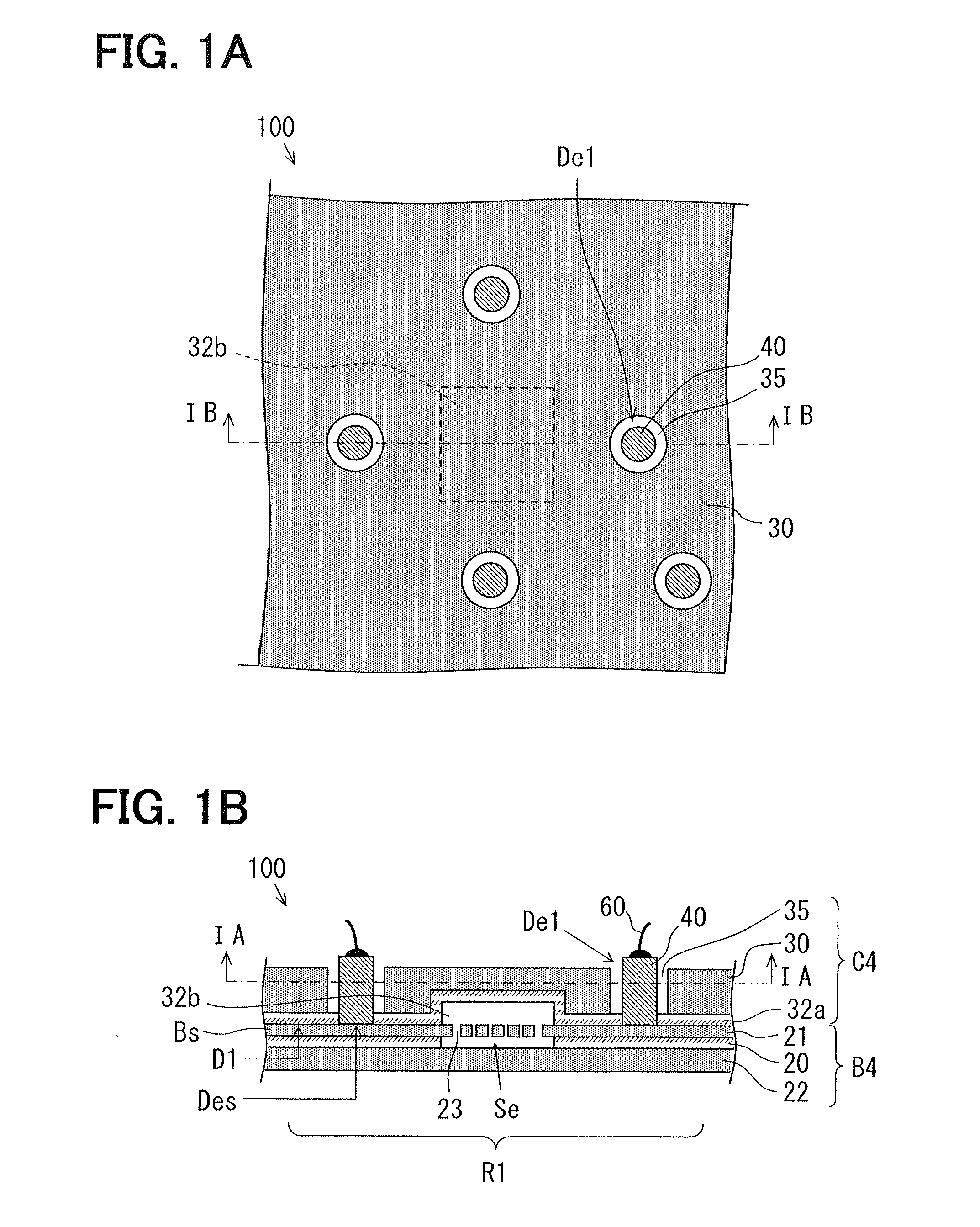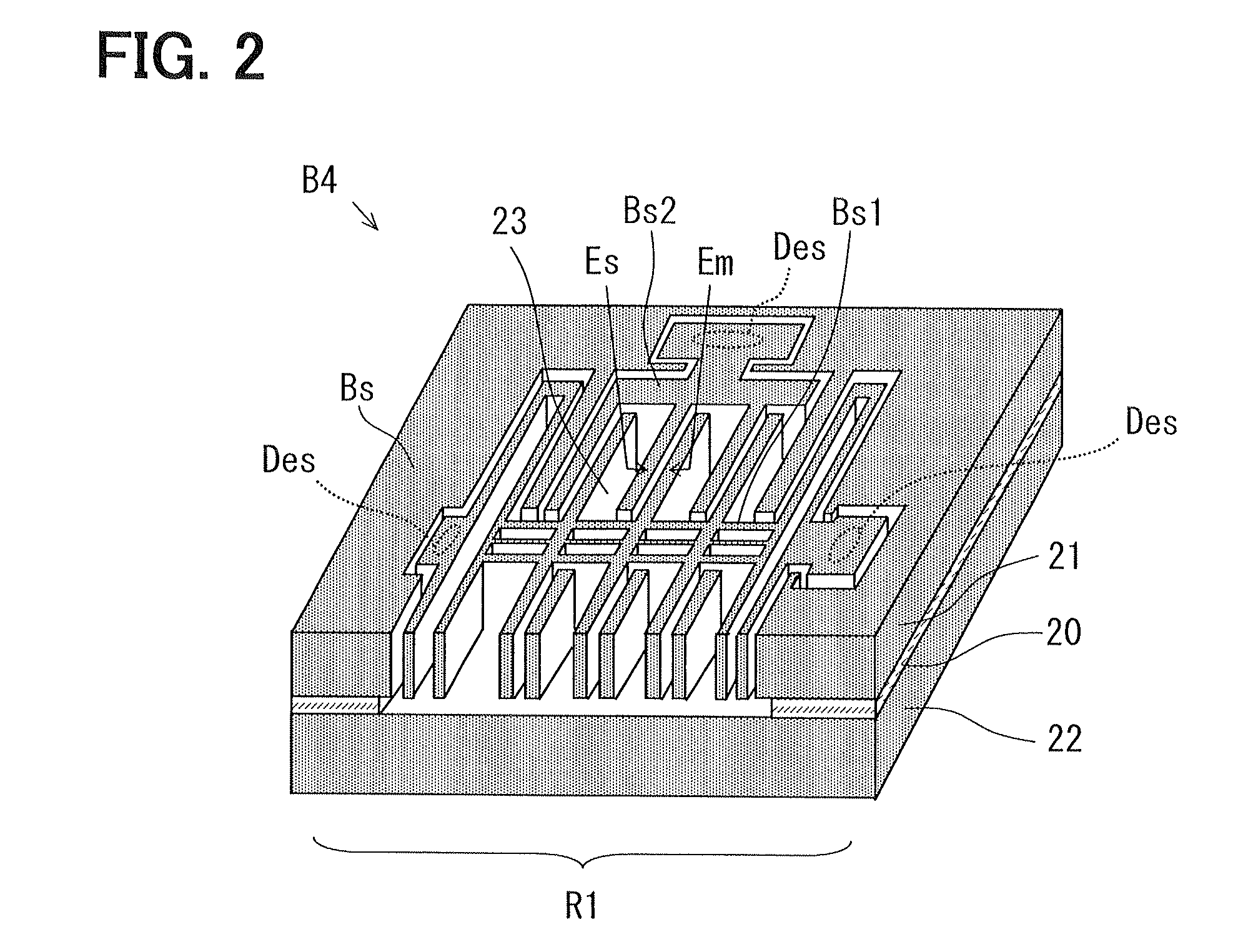Semiconductor device and method of manufacturing the same
a technology of semiconductor devices and semiconductors, applied in semiconductor devices, microelectromechanical systems, semiconductor/solid-state device details, etc., can solve the problem of difficult creation of parasitic capacitance, and achieve the effect of reducing resistance and reducing the occurrence of parasitic capacitan
- Summary
- Abstract
- Description
- Claims
- Application Information
AI Technical Summary
Benefits of technology
Problems solved by technology
Method used
Image
Examples
Embodiment Construction
[0071]FIG. 1A is a schematic plan view of a part of a semiconductor device 100 as an example of the semiconductor device according to an embodiment. FIG. 1B is a schematic cross-sectional view taken along a line IB-IB in FIG. 1A. FIG. 1A is also a cross-section taken along a line IA-IA in FIG. 1BFIG. 2 is a perspective view of a base substrate of the semiconductor device 100 shown in FIGS. 1A and 1B.
[0072]In FIGS. 1A, 1B and 2 like parts which correspond to parts of the semiconductor devices 91, 92 of FIGS. 30 and 31, are designated with like reference characters.
[0073]Referring to FIGS. 1A and 1 B, the semiconductor device 100 has a base substrate B4 made of silicon and a cap substrate C4 made of silicon. The base substrate B4 and the cap substrate C4 are bonded to each other at a bonding surface D1.
[0074]The semiconductor device 100 includes a mechanical quantity sensor element using an inertia force. A sensing portion Se for detecting mechanical quantity such as acceleration and ...
PUM
 Login to View More
Login to View More Abstract
Description
Claims
Application Information
 Login to View More
Login to View More - R&D
- Intellectual Property
- Life Sciences
- Materials
- Tech Scout
- Unparalleled Data Quality
- Higher Quality Content
- 60% Fewer Hallucinations
Browse by: Latest US Patents, China's latest patents, Technical Efficacy Thesaurus, Application Domain, Technology Topic, Popular Technical Reports.
© 2025 PatSnap. All rights reserved.Legal|Privacy policy|Modern Slavery Act Transparency Statement|Sitemap|About US| Contact US: help@patsnap.com



